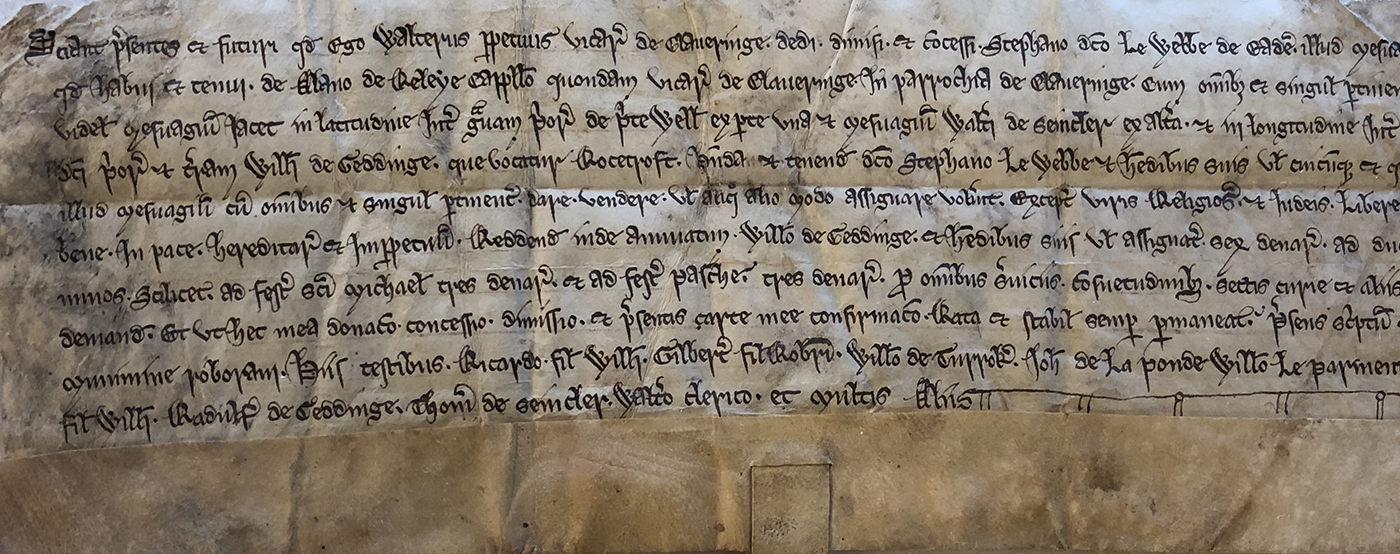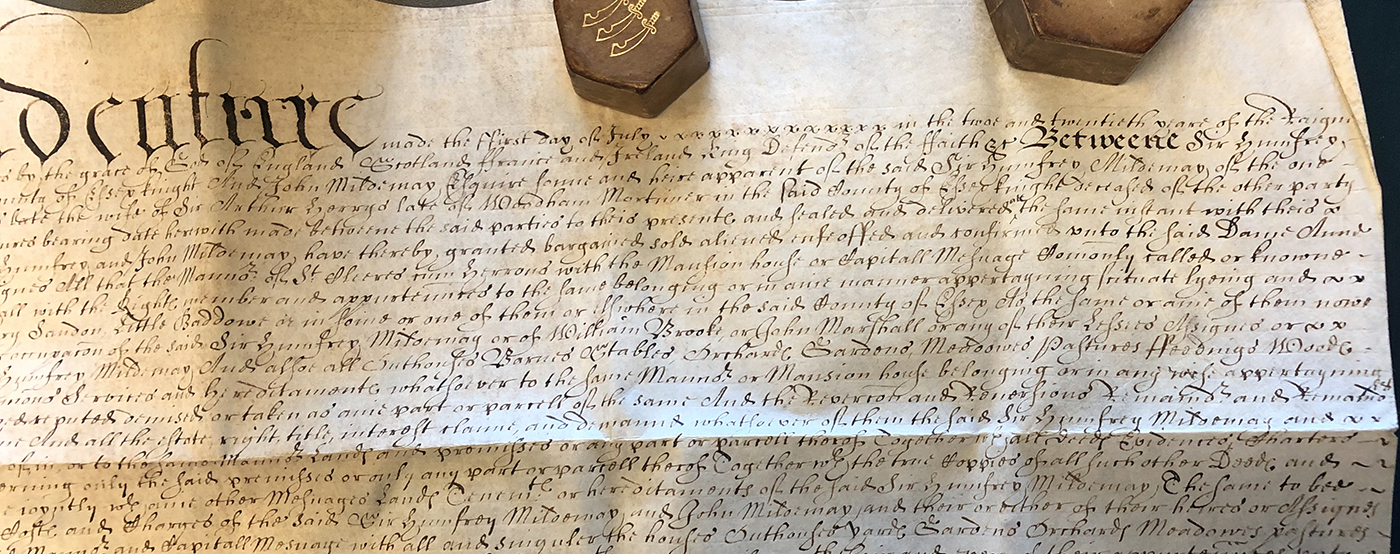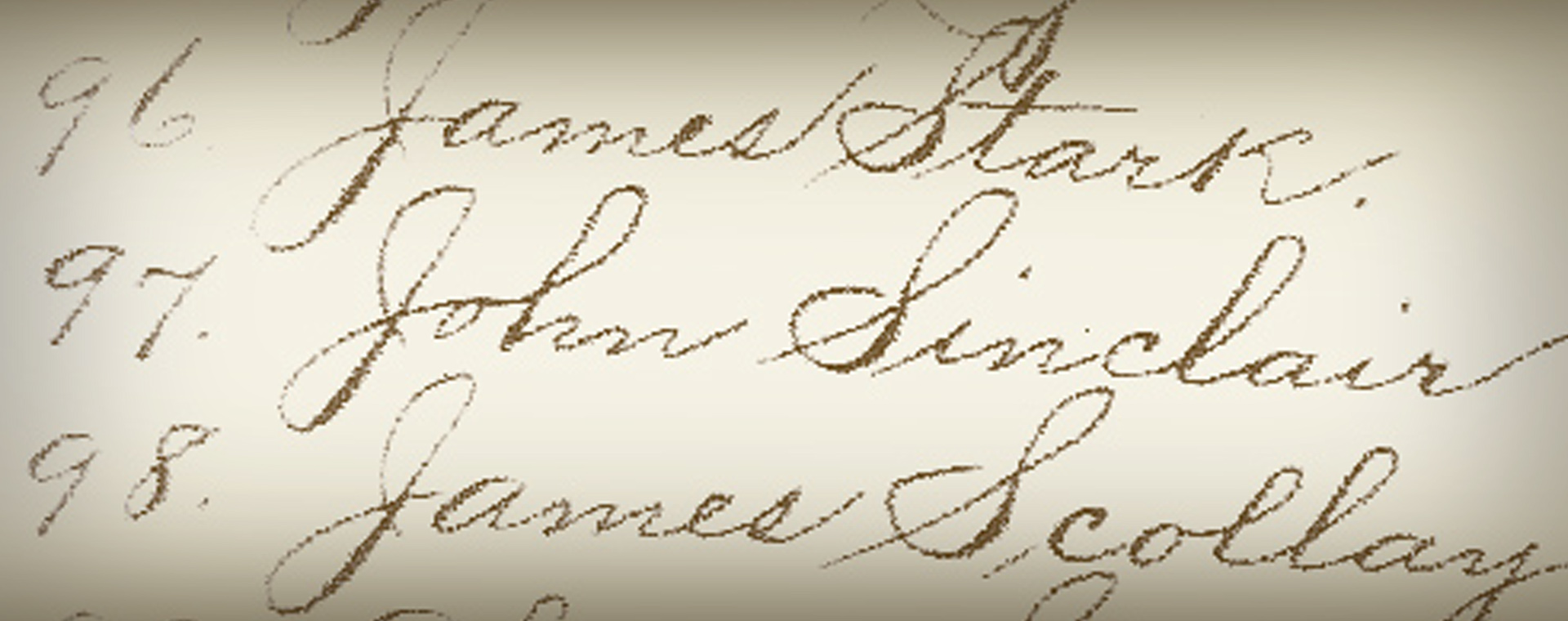The Vilier / Viler family were closely associated with the St Clairs associated with Savigny Abbey.
Planché (p. 281) has:
Auvilliers, “Sire d’,” 1. 13.747.- There are two communes of this name, one near Pont-l’Eveque, and the other near Mortemer-sur-Eaulne. As the “Sire d’Auvillers” is described by Wace as charging in company with Hugh de Mortemer, it is probable he hailed from the latter, and was a vassal of the Mortemers. A Hugh de Aviler was a vassal of Robert Malet, in Suffolk, in the days of the Conqueror, and a benefactor to the Priory of Eye, founded by him [Malet]; but I find nothing more to learn more about the Sire d’Auvilliers who fought at Senlac.
This Robert Malet is a good line of enquiry. Briefly, here’s what I found:
Robert Malet‘s Eye Priory received a charter of assent from his sister Beatrice. Later, a precept of Henry I made it clear that she was the wife of William de Arques of Folkstone in Kent (Eye Cart., no. 2). There is a St Clair connection here. A Main de Sancto Claro who attested a charter of Beatrice Malet to the Abbey of St. Peter, Preaux. William de Arques was a Domesday tenant of Hugh de Montford in Kent.
In further research on Malet’s Eye Priory, Vivien Brown’s Eye Priory Cartulary and Charters shows connections between several families involved in benefaction to Eye: Malet, St. Clair, Warenne, and Glanvill, to name just a few.
Following that Preaux Abbey connection, Fauroux (p. 33) shows that Richard Croc and his wife Benceline left to Préaux Abbey land at St-Clair. The identity of the place is obscure but could be either Saint-Clair-d’Arcey, near Bernay, Eure, or Saint-Clair-sur-les-Monts, near Yvetot, Seine-Maritime.
Lewis C. Loyd has the Avillers (Auvilliers from the Seing-Inf., Arrandossimennt of Neufchatel. They held Brome in Suffolk, and Shelfhanger in Norfolk. We know that because a Hugh de Avilers was a man of Robert Malet, the wealthy land owner about whom K.S.B. Keats-Rohan wrote such an interesting paper. In that paper, she mentioned Main de St. Clair as a witness of a gift of Beatrice Mallet, wife of William de Arques, which was witnessed by Main de St. Clair. So now we suspect a small affinity group comprised of St. Clair, Malet, Avilers, and likely Mortemer and Arques. (Loyd, p.9)
The name Aviler never figured prominently in Norman England, but the above-mentioned Hugh d’Aviler was a vassal of Robert Malet of Suffolk and was one of the benefactors to Eye Priory. Eye was founded circa 1086.
“Hugh de Avilers gave two thirds of his tithe of Brome and Shelfanger (1.xxxvii). There is no evidence that Hugh held land of Robert Malet who had only small parcels of land in Brome and no holding is Shelfanger in 1086. The King held land in Shelfanger and a manor of 60 acres in Brome for which no under-tenant is given. The Aviler family in the thirteenth century held the majors of Brome and Erwarton and land in Shelfanger by serjeanty tenure of the Crown, and the gift of Hugh to Eye traces this holding back to at least the early twelfth century. In 1254 the tithe was valued at 1/2m, in 1291 at 5s.” (Eye, p. 63)
Eye goes on to mention the Aviler family holding in Beria in Samford hundred (likely Bowen Hall in Wherstead), Erwarton, and Laxfield.
“The family continued in England, for in 1212 Bartholomew de Auviliers was holding Brome and Selfhanger of the king by serjeanty. It would appear therefore that the superiority over these lands was not granted out again with the rest of the honour of Eye after the forfeiture of Robert Malet.” (Loyd, p.9)
Anonymous (Round, p. 338) has the Ricardo Osovilla (Avilers) as a witness to a charter of Henry II in about 1185 to the Abbey “De Voto” Cherbourg. Other witnesses include William Malet and William de Vaux, among others. This may pull the de Vaux family into the affinity group.
Auvilliers, Neufchâtel-en-Bray, france
Mortemer, Neufchâtel-en-Bray, Dieppe, Seine-Maritime, Haute-Normandie
They’re less than 3 kilometers from each other.



